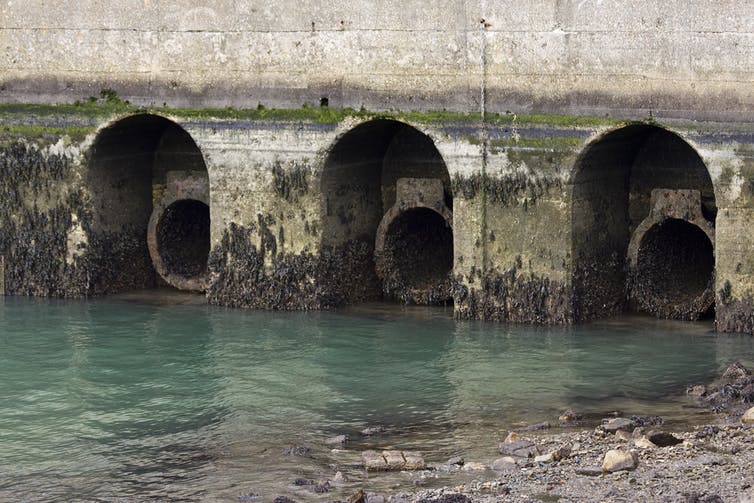
Dr. Raju Adhikari: Data from published epidemiology and virologic studies provide evidence that COVID-19 is primarily transmitted from symptomatic people to others who are in close contact through respiratory droplets, by direct contact with infected persons, or by contact with contaminated objects and surfaces. WHO guidelines on social distancing of 1.5 meters and isolation measures are aimed to prevent these modes of virus transmission.
While the global focus has been to control the virus transmission mode above the ground, its likely transmission from underground sewage waste sources are largely ignored. Severely infected and suspected cases are lodged in hospitals, in quarantine places such as hotels, temporary health posts, makeshift camps, and asymptomatic cases living in houses that may have been inadvertently releasing the virus to wastewater reservoir network from the above outlets. Scientists have been analyzing the COVID presence in sewage reservoir of houses, industry, and hospitals to know the extent of virus presence and their survival under the conditions and the risk they pose for transmission.Recently COVID 19 has been reported in human faeces of patients tested negative for up to 33 days. The virus is also reported active in sewage aqueous conditions for up to 14 days and transformed to fine spray droplets during the handling, treatments, discharge, transport and in waterways using recycled water. COVID spread through the above sources is poorly understood and speculative but remains a significant risk according to scientists. Such risks are high in parts of the world where practices of open defecation, poor sanitation, drainage, and sewerage treatment systems exist. Scientists are now studying seriously the risk of potential spread from these neglected sources and conduct a real risk assessment.
Australian researchers have also reported early warning surveillance systems to track COVID transmission in the community through sewage sources. This was hailed as pioneering research and is expected to help in mapping the virus spread from non-human contact. Melbourne Water surveillance work is focussed on tracing the emerging and re-emerging of the outbreaks, better characterize the extent of asymptomatic infections and community transmission, within sewer catchment areas, and confirm virus clearance from an area.
COVID 19 has been able to survive a longer time than expected in the air, water, surfaces above and under the ground, in cold and warm temperature, and remained dormant and resurge.Increased cases have been reported from several countries that eased lockdown measures.
The government is making informed decisions at every step to help return to normal life but individuals need to take increased responsibility to make this happen. The take-home message is that we remain vigilant until a vaccine is found.
About the author:
Dr. Raju Adhikari is a former Principal Scientist, and an Honorary Fellow at CSIRO – Australia’s national science agency. He is an highly acclaimed scientist, and has been leading several research and innovation programs with CSIRO. He currently serves as the Director of Cram Responsive Polymers Pty Ltd, and is working in a wide range of research projects, and is involved in the design, synthesis and characterisation of polymer for nutrient coating and film for agriculture application, amongst others.
Besides achieving academic and professional excellence, Dr. Adhikari is a leading member of the Nepali Diaspora in Australia. He is the Founder President of Nepalese Association Victoria and FeNCAA, an umbrella organisation of all registered Nepali organisations in Australia.
Disclaimer: Views/ideas presented in the article are of the author, and do not reflect the editorial stance of Nepalese Voice.
The following article was first published on the Facebook page of Dr. Adhikari, and has been reprinted with permission.






